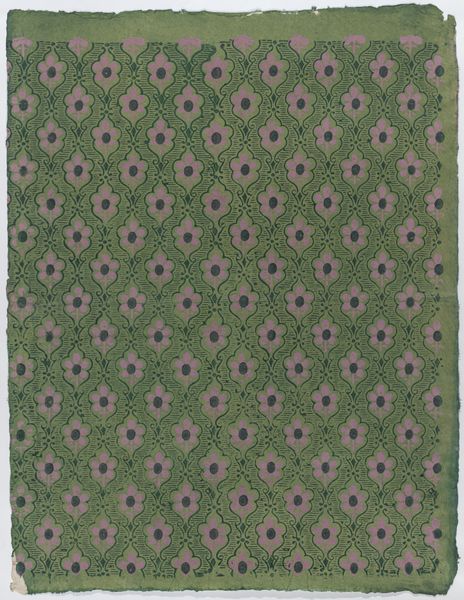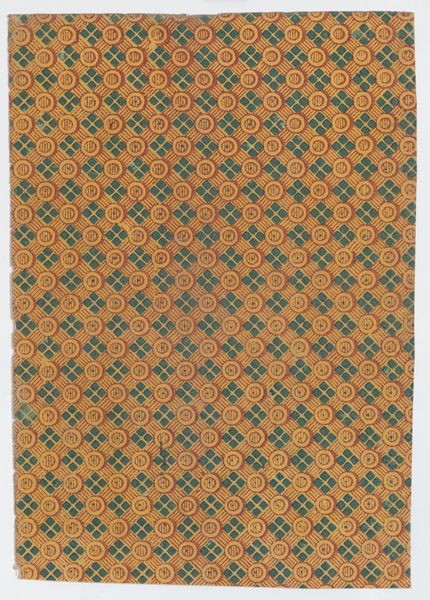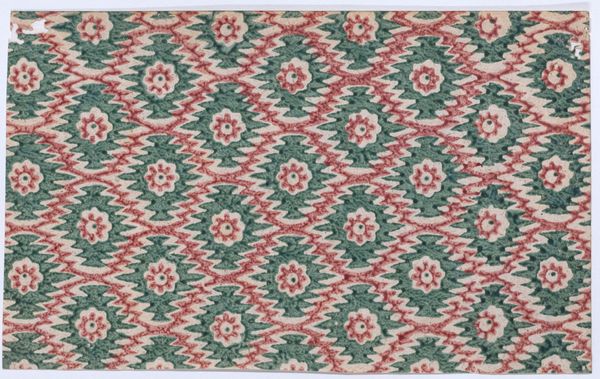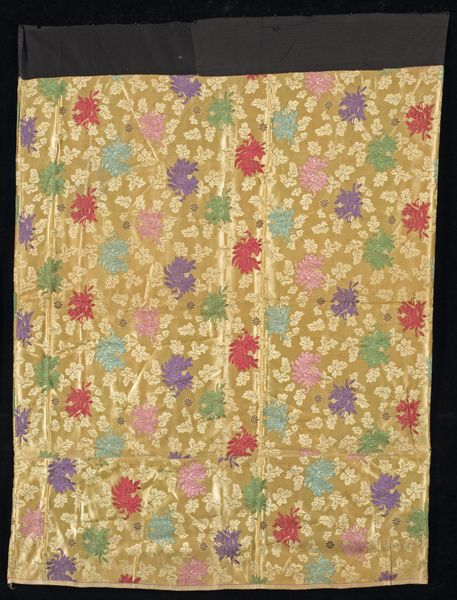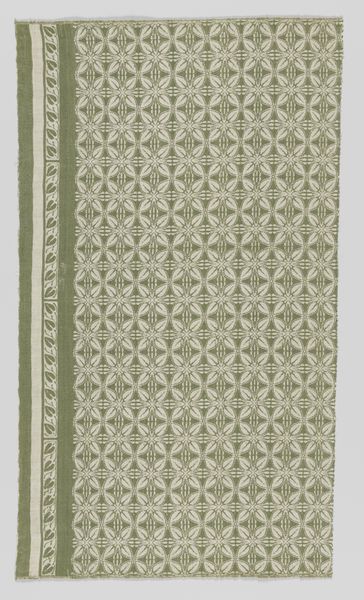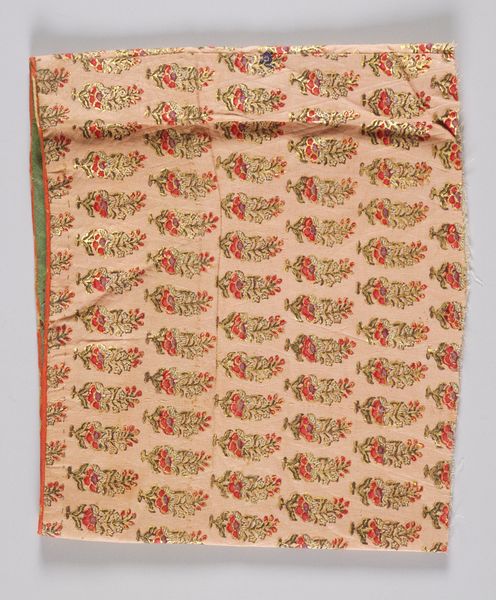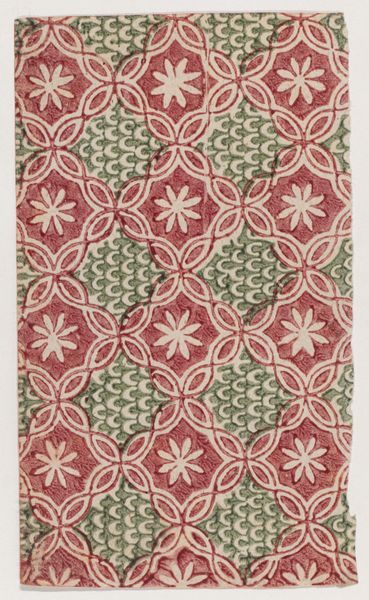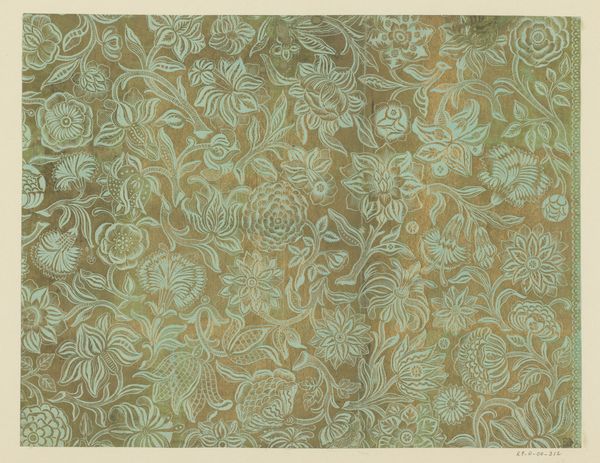
Fragment bedrukte cretonne met patroon van klaver met vlinder binnen spitsovalen 1900 - 1925
0:00
0:00
theonieuwenhuis
Rijksmuseum
print, textile, cotton
#
natural stone pattern
#
organic
# print
#
arts-&-crafts-movement
#
textile
#
pattern background
#
pattern design
#
repetition of pattern
#
vertical pattern
#
regular pattern
#
pattern repetition
#
cotton
#
textile design
#
decorative-art
#
imprinted textile
#
layered pattern
Dimensions: height 95.0 cm, width 100.0 cm
Copyright: Rijks Museum: Open Domain
Curator: This is a printed cretonne fragment, made between 1900 and 1925. The artist is Theo Nieuwenhuis, and the piece currently resides in the Rijksmuseum collection. Editor: Immediately, I’m struck by the delicate repetition, a rather soothing visual rhythm established by the clover and butterfly motifs, all encased within pointed ovals. Curator: Precisely. Notice how Nieuwenhuis has deployed the spitsoval, lending a restrained geometric structure to an otherwise organic pattern. It’s an excellent example of Arts and Crafts principles in textile design, and you can clearly appreciate the regularity of the repetition in the pattern itself. Editor: Yes, and within that seemingly gentle repetition, there's a hint of societal aspiration. Consider the burgeoning middle classes at the turn of the century, seeking to democratize beauty, reclaim artisanal traditions from mass-produced, often exploitative, industry. This textile whispers of social reform and a yearning for simpler, perhaps idealized, connections to nature. The very use of cretonne speaks to accessibility. Curator: Absolutely. Furthermore, observe how the restrained color palette—the pale greens and muted lilacs—creates a sense of harmony and order. This subtle color theory is as important as the overt symbols of nature. Editor: While the muted tones indeed exude harmony, could it also be interpreted as reflective of the Edwardian era's rigid gender roles and social decorum? Were these fabrics literally domesticating nature within patriarchal spaces? Curator: That’s a compelling reading, one that moves beyond surface appreciation. I’m curious how you feel the natural forms interact with geometric form? Editor: This interplay seems central. Perhaps these regular, vertical structures mirror the period's constrained social norms. By contrasting with these looser naturalistic flourishes, the overall effect, though decorative, reveals underlying tensions. Curator: Your point is taken, there is a tension, certainly not only pleasing floral decoration. For me, my mind focuses more clearly on how it fits within design and artistic structures and influences in Europe. Editor: Indeed, art is multifaceted and ever-evolving, with different interpretations surfacing as societal discourse shifts and changes!
Comments
No comments
Be the first to comment and join the conversation on the ultimate creative platform.
